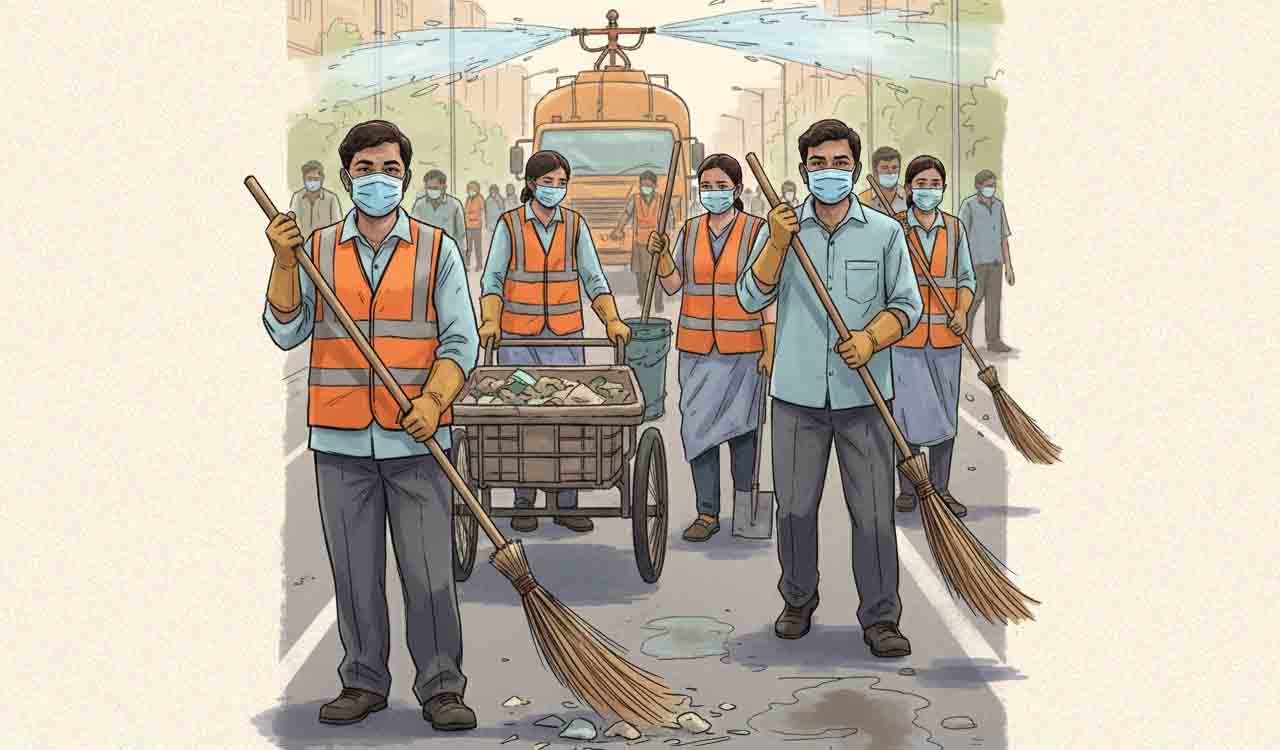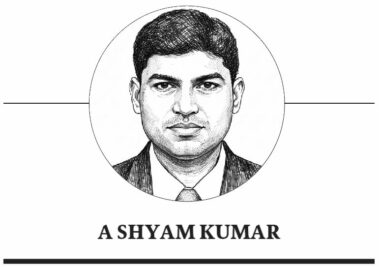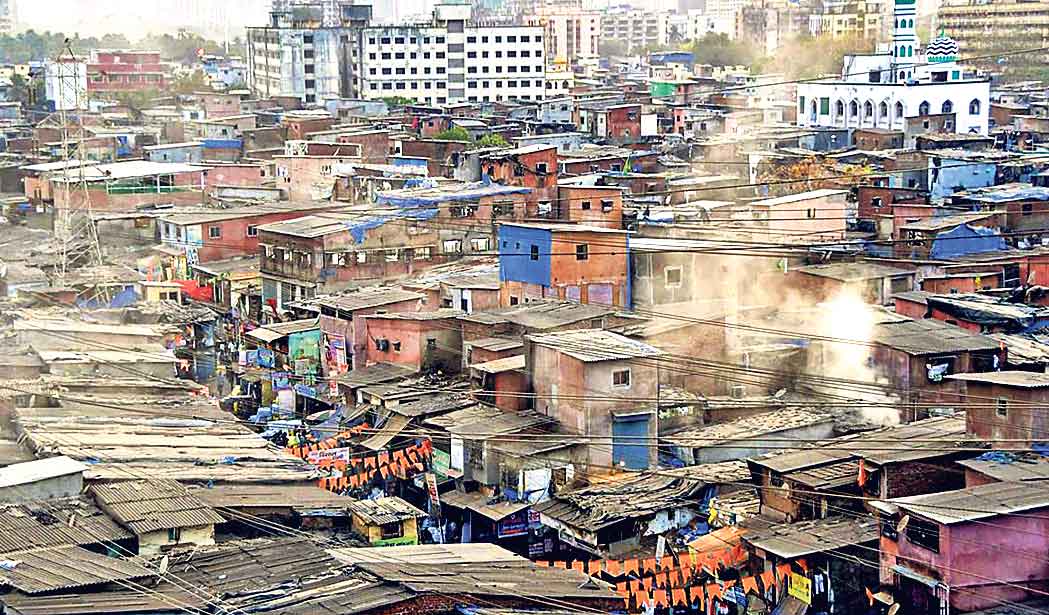Opinion: Sampoorna Swachhata remains elusive
Locally tailored waste management rules, and strict enforcement are essential to achieving India’s sanitation goals

By A Shyam Kumar
The Swachh Bharat Mission (SBM) has evolved significantly beyond its initial symbolism. What began as a call to clean streets is now shaping how India approaches public health, women’s dignity, and environmental responsibility. The Mission has made significant strides in advancing public health and sanitation management nationwide, yet the goal of “Sampoorna Swachhata” remains elusive. Phase-II of the Mission seeks to achieve comprehensive sanitation facilities through solid and liquid waste management, while also sustaining open defecation-free status.
Various programmes are being implemented by respective departments through urban and rural local bodies under SBM-Urban and SBM-Rural. According to SBM(U) data, urban India generates approximately 1.59 lakh tonnes per day (TPD) of waste, of which only 1.29 lakh tonnes are processed. However, this is a remarkable leap from just 16 per cent waste processing in 2014 to over 81 per cent today.
Solid Waste
Waste management has emerged as a central pillar of the Swachh Bharat Mission, marking a paradigm shift from mere disposal to sustainable utilisation of resources. Chandigarh, Chhattisgarh, Goa, Madhya Pradesh, and Puducherry are the only States processing all of their collected solid waste. The Solid Waste Management Rules of 2016 aim for “zero waste to landfill” by mandating recycling, reuse, and the reclamation of old dumpsites through biomining and bioremediation.
Across municipal bodies in the country, several waste management facilities are available: 133 biomethanation plants, 2,913 waste-to-compost plants, 58 waste-to-energy plants, 3,051 material recovery facilities, 1,328 construction and demolition waste plants, and 298 solid and liquid resource management plants — totaling 7,782. In addition, liquid waste management infrastructure includes 1,071 sewage treatment plants and 1,070 faecal sludge treatment plants.
India’s waste management relies on informal workers who remain outside insurance cover and regular health check-ups
India’s war against legacy waste is moving slowly. Of the massive 2,492 lakh tonnes of accumulated garbage, 1,437 lakh tonnes (58 per cent) have been remediated, breathing new life into choked lands. But as fresh waste continues to accumulate daily, these sites risk turning into massive landfills. In the face of an increasing use-and-throw culture, the need for advanced facilities incorporating modern technology has become pressing.
Under SBM-Gramin 2.0, the central government has set a target of making all villages ODF Plus Model by 2025-26. Sikkim and Lakshadweep have already achieved this status, while Tripura, Dadra & Nagar Haveli, and Daman & Diu have been declared ODF Plus as well.
States’ Progress
As the deadline for achieving this milestone draws near, the States exhibit varying levels of progress. Rural local bodies have made notable strides in creating solid waste management infrastructure, such as sheds and vehicles, yet effective implementation remains an obstacle. Crucially, the States must evince a steadfast commitment to phasing out single-use plastics.
Many States also lag in establishing adequate and effective liquid waste management facilities in rural areas. Insufficient technical expertise and financial resources underscore the need for rural local bodies to work in convergence with urban local bodies, especially regarding faecal sludge management. To fulfil the goals of SBM 2.0, governments must foster active citizen participation, building on the successes of SBM-1.
Effective management of solid and liquid waste necessitates the implementation of multifaceted strategies. Decentralising waste management at the level of urban and rural local bodies is essential. Citizens must recognise their responsibility to reduce and reuse waste. Infrastructure development in local bodies is crucial to facilitate efficient waste management. Segregating waste at the source into wet and dry categories is vital, as failure to do so can overburden local bodies.
Governments and citizens must collaborate to eliminate single-use plastics. Strict enforcement of ‘Extended Producer Responsibility (EPR)’ is necessary to curb single-use plastic waste. The ‘Green Leaf Rating’ system developed for the tourism sector needs strengthening. Continuous research and innovation in safe and scientific waste disposal technologies should be encouraged, with startups and technical educational institutions, such as IITs, playing key roles. Innovations should be piloted and tested within local bodies.
Companies must invest in waste management technologies as part of their corporate social responsibility. Industries should adopt the surrounding areas for waste management, easing the burden on governments, especially local bodies.
The importance of waste collection is matched only by the need for continuous monitoring of its safe disposal. Local bodies and pollution control boards should be allocated sufficient powers, resources, and personnel. NGOs and community groups working on cleanliness initiatives must receive greater support and integration. Each State must develop comprehensive, solid, and liquid waste management rules tailored to local conditions and implement them strictly.
All government offices must set up effective waste disposal mechanisms. Gated residential complexes and institutions should be held accountable for managing their own waste. Heavily crowded areas such as railway and bus stations, tourist spots, and marketplaces must have solid waste collection centres.
Securing Workers
Currently, India’s waste management is dominated by the informal sector. Workers in this sector should be offered insurance coverage and welfare programmes. Local body sanitation maintenance staff must be provided with modern equipment, insurance, and compulsory and regular health check-ups. Central and State governments must empower local bodies with financial resources and technical expertise.
Waste management should gradually be transformed into a revenue-generating source for local bodies, using available legal frameworks. Achieving this, however, necessitates political will coupled with public support. Citizens should cooperate with local bodies for their own welfare. The attainment of improved living standards and sustainable development is contingent upon the adoption of safe and scientific waste management methodologies.
Waste management is everyone’s responsibility, which requires the collective efforts of all stakeholders in society. Fostering public participation is essential. Through this collaborative approach, the existing challenges can be overcome, and the vision of ‘Sampoorna Swachhata’ can be achieved.

(The author is a Swachh Bharat analyst, Hanumakonda, Telangana)
Related News
-
Parliament panel recommends UGC recognition for Sonam Wangchuk’s HIAL
6 mins ago -
Parl Panel for diversification of crude sources to cut geopolitical risks
18 mins ago -
Fire breaks out in mobile shop in Andhra’s Gudivada, extinguished
23 mins ago -
‘It will be a storm this year’: Nani wishes The Paradise director Srikanth Odela on birthday
27 mins ago -
CBI chargesheets 4 Chinese behind Rs 1,000 cr cyber crime racket; 111 shell companies unmasked
30 mins ago -
Bengal SIR: Irregularity, security breach in hearing phase be treated seriously, cautions ECI
31 mins ago -
Nagaland: Wildfire rages in famed Dzukou Valley for 3rd day
36 mins ago -
Six militants arrested in Manipur for extortion
42 mins ago




